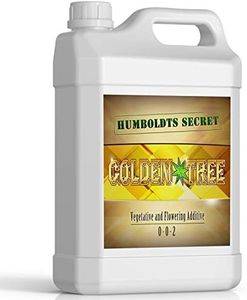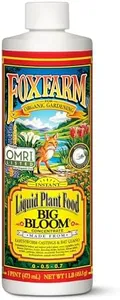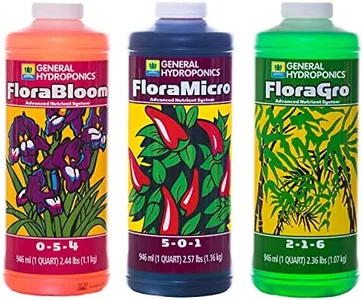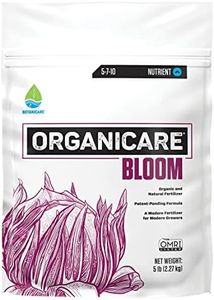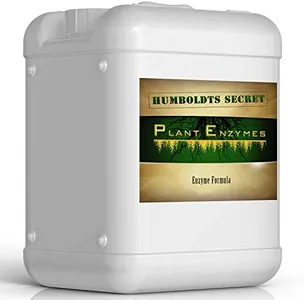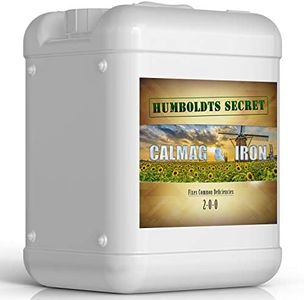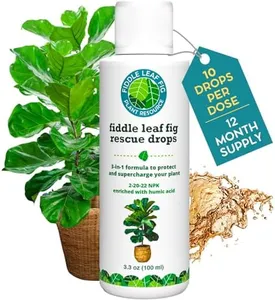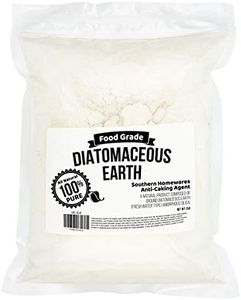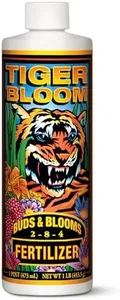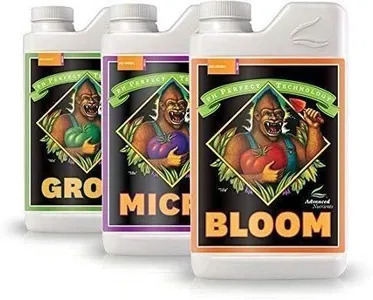10 Best Fertilizer For Marijuanas 2025 in the United States
Our technology thoroughly searches through the online shopping world, reviewing hundreds of sites. We then process and analyze this information, updating in real-time to bring you the latest top-rated products. This way, you always get the best and most current options available.

Our Top Picks
Winner
FoxFarm Fertilizer Soil Trio Liquid Nutrient: Tiger Bloom, Grow Big, Big Bloom Bottles - (Pack of 3-1 Pint)
Most important from
23220 reviews
The FoxFarm Fertilizer Soil Trio is a solid choice for those looking to enhance their marijuana plants. This trio includes Grow Big, Big Bloom, and Tiger Bloom, which are designed to work together to support healthy growth, flowering, and fruit production. The N-P-K ratios in these fertilizers cater to different growth stages, with Tiger Bloom focusing on phosphorus to boost flowering, while Grow Big supports vegetative growth. This balanced approach allows growers to provide targeted nutrition throughout the plants' life cycles.
One of the product's great strengths is its organic status, with Big Bloom being OMRI Listed, making it a suitable option for those who prefer organic gardening. The ease of use is another plus; you can apply them regularly with each watering, simplifying the feeding routine. This makes it ideal for beginners who may not have extensive experience with fertilizers.
However, there are a few drawbacks to consider. Some users have noted that the liquid formulation can be messy if not handled carefully, and it may require precise measurements to avoid over-fertilizing. Additionally, while it's great for supporting plant growth, the need for three different products might be overwhelming for novice gardeners who are just starting out.
Most important from
23220 reviews
FoxFarm - Big Bloom Plant Food, Liquid Fertilizer Concentrate for Flowers, Fruits, and Vegetables, All Purpose Plant Fertilizer for Indoor & Outdoor Potted Plants, NPK 0.01-0.03-0.7 (Pint)
Most important from
10850 reviews
FoxFarm's Big Bloom Plant Food is a liquid fertilizer with an N-P-K ratio of 0.01-0.03-0.7, which is quite low in nitrogen and phosphorus but has a higher potassium content. This makes it suitable for flowering and fruiting stages of marijuana growth. The product is organic, featuring ingredients like earthworm castings and bat guano, which can add a broad spectrum of micronutrients beneficial for healthy plant development.
It is designed to enhance root strength, improve flower fragrance, and boost essential oil production, which can be particularly useful for increasing the potency of marijuana plants. The fertilizer is safe for regular use on all types of flowering and fruiting plants, including marijuana. It comes in a liquid form that mixes easily with water, simplifying the application process.
Its low N-P-K ratio might not be sufficient for the vegetative stage when marijuana plants require higher levels of nitrogen and phosphorus for vigorous growth. Additionally, while it offers a comprehensive range of nutrients, users looking for a highly targeted fertilization approach may need to supplement it with additional products. This fertilizer is best suited for enhancing the bloom phase and should be paired with other products during the vegetative stage to meet all nutritional needs.
Most important from
10850 reviews
General Hydroponics FloraSeries Hydroponic Nutrient Fertilizer System Trial Pack with FloraMicro, FloraBloom and FloraGro, 1 qt.
Most important from
9090 reviews
The General Hydroponics FloraSeries Hydroponic Nutrient Fertilizer System is designed specifically for hydroponic gardening, making it a solid choice for those growing marijuana plants. It consists of three formulas: FloraMicro, FloraBloom, and FloraGro, each catering to different growth stages. This nutrient system is praised for its N-P-K ratio, which supports healthy structural, foliar, and flowering growth, essential for cannabis cultivation. The inclusion of micronutrients ensures that plants receive all necessary elements for robust health, which is a big plus for growers aiming for a successful harvest.
One of the strengths of this product is its ease of use. The mixing ratio of 1:1:1 simplifies the process, making it accessible even for beginners. The liquids are easy to apply, reducing the hassle often associated with fertilizing plants. Some users report positive results, which speaks to its effectiveness.
However, there are a few considerations to keep in mind. Since it is a hydroponic nutrient system, it may not be suitable for those using traditional soil gardening methods. Additionally, while many users appreciate the balanced nutrient delivery, some may find the need for careful monitoring of pH levels to ensure optimal results a bit daunting. Finally, being a liquid fertilizer, it may require more frequent applications compared to granular options, which some growers might prefer for convenience.
